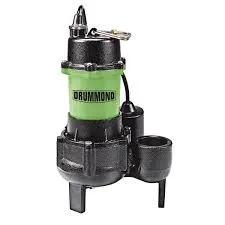English
- Afrikaans
- Albanian
- Amharic
- Arabic
- Armenian
- Azerbaijani
- Basque
- Belarusian
- Bengali
- Bosnian
- Bulgarian
- Catalan
- Cebuano
- Corsican
- Croatian
- Czech
- Danish
- Dutch
- English
- Esperanto
- Estonian
- Finnish
- French
- Frisian
- Galician
- Georgian
- German
- Greek
- Gujarati
- Haitian Creole
- hausa
- hawaiian
- Hebrew
- Hindi
- Miao
- Hungarian
- Icelandic
- igbo
- Indonesian
- irish
- Italian
- Japanese
- Javanese
- Kannada
- kazakh
- Khmer
- Rwandese
- Korean
- Kurdish
- Kyrgyz
- Lao
- Latin
- Latvian
- Lithuanian
- Luxembourgish
- Macedonian
- Malgashi
- Malay
- Malayalam
- Maltese
- Maori
- Marathi
- Mongolian
- Myanmar
- Nepali
- Norwegian
- Norwegian
- Occitan
- Pashto
- Persian
- Polish
- Portuguese
- Punjabi
- Romanian
- Russian
- Samoan
- Scottish Gaelic
- Serbian
- Sesotho
- Shona
- Sindhi
- Sinhala
- Slovak
- Slovenian
- Somali
- Spanish
- Sundanese
- Swahili
- Swedish
- Tagalog
- Tajik
- Tamil
- Tatar
- Telugu
- Thai
- Turkish
- Turkmen
- Ukrainian
- Urdu
- Uighur
- Uzbek
- Vietnamese
- Welsh
- Bantu
- Yiddish
- Yoruba
- Zulu
Telephone: +86 13120555503
Email: frank@cypump.com
Oct . 19, 2024 13:08 Back to list
slurry tanker pump parts
Understanding Slurry Tanker Pump Parts A Comprehensive Guide
Slurry tanker pumps play a crucial role in various industrial applications, particularly in industries like agriculture, mining, and wastewater management. These pumps are specifically designed to handle the transportation of thick, viscous liquids containing solid particles—also known as slurries. Understanding the components that make these pumps function efficiently can help users maintain and operate their equipment more effectively.
Key Components of Slurry Tanker Pumps
1. Pump Body The pump body is the principal structure that houses all components of the pump. Made from durable materials like cast iron or stainless steel, the pump body must withstand the abrasive nature of slurries. Its design ensures a secure and efficient flow path for the slurry.
2. Impeller The impeller is the heart of the slurry pump, responsible for imparting energy to the slurry. It draws the slurry into the pump and pushes it out through the discharge outlet. Impellers for slurry pumps are often of a robust construction to resist wear and tear, usually designed in an open or semi-open configuration to accommodate solid particles.
3. Volute Casing Surrounding the impeller, the volute casing transforms the kinetic energy generated by the impeller into pressure energy. This component is vital for regulating the flow of the slurry and preventing clogging, thereby maintaining efficient pumping action.
4. Wear Plates Given the abrasive nature of slurry, wear plates serve a protective function. These replaceable components are mounted in the pump to absorb the impact of solid particles, prolonging the pump’s operational life. Regular inspections and timely replacements of wear plates can drastically reduce maintenance costs and downtime.
5. Suction and Discharge Ports These ports are critical for the intake and discharge of slurry. The size and configuration of the ports must be suitable for the specific application to ensure optimal flow rates and minimize the risk of blockages. The design often accommodates the use of various connection types to facilitate easy integration into existing systems.
slurry tanker pump parts

6. Mechanical Seal Seals prevent leakage of slurry and ensure that the pump operates efficiently without losing pressure. Mechanical seals are particularly crucial because slurry can be corrosive. Choosing the right seal material based on the slurry’s properties can help enhance reliability and longevity.
7. Drive Mechanism The drive mechanism, which can be electric or hydraulic, powers the pump. Understanding the torque requirements and matching them with the correct motor or engine is crucial for the efficiency of the slurry pump.
8. Bearing Assembly Bearings support the rotating shaft and allow for smooth operation of the impeller. They must be robust enough to handle the loads imposed by the pump operation and prevent axial and radial movement.
Maintenance and Care
Proper maintenance is key to the performance and longevity of slurry tanker pumps. Regular inspections should focus on wear parts like the impeller, wear plates, and seals. Additionally, operators should be vigilant about monitoring for leaks around the mechanical seals and ensure that the bearings are adequately lubricated.
Operational best practices include - Regular Cleaning This prevents sediment buildup and the potential for clogging. - Monitoring Performance Tracking flow rates, pressures, and vibration levels can help identify issues before they lead to failure. - Scheduled Repairs Replacing worn-out parts promptly can prevent extensive damage to the pump.
Conclusion
Understanding the essential parts of slurry tanker pumps is vital for anyone involved in handling slurries. Each component plays a significant role in the pump's overall efficiency, with wear parts requiring particular attention to ensure longevity and effective operation. By following best practices in maintenance and care, operators can maximize the service life of their slurry pumps, thus enhancing productivity and reliability in their respective industries.
-
Horizontal Split Case Pump with GPT-4 Turbo | High Efficiency
NewsAug.01,2025
-
ISG Series Pipeline Pump - Chi Yuan Pumps | High Efficiency, Durable Design
NewsAug.01,2025
-
Advanced Flue Gas Desulfurization Pump with GPT-4 Turbo | Durable & Efficient
NewsJul.31,2025
-
ISG Series Vertical Pipeline Pump - Chi Yuan Pumps | Advanced Hydraulic Design&Durable Construction
NewsJul.31,2025
-
ISG Series Vertical Pipeline Pump - Chi Yuan Pumps | Energy Efficient & Low Noise
NewsJul.31,2025
-
pipeline pump - Chi Yuan Pumps Co., LTD.|High Efficiency&Low Noise
NewsJul.31,2025










